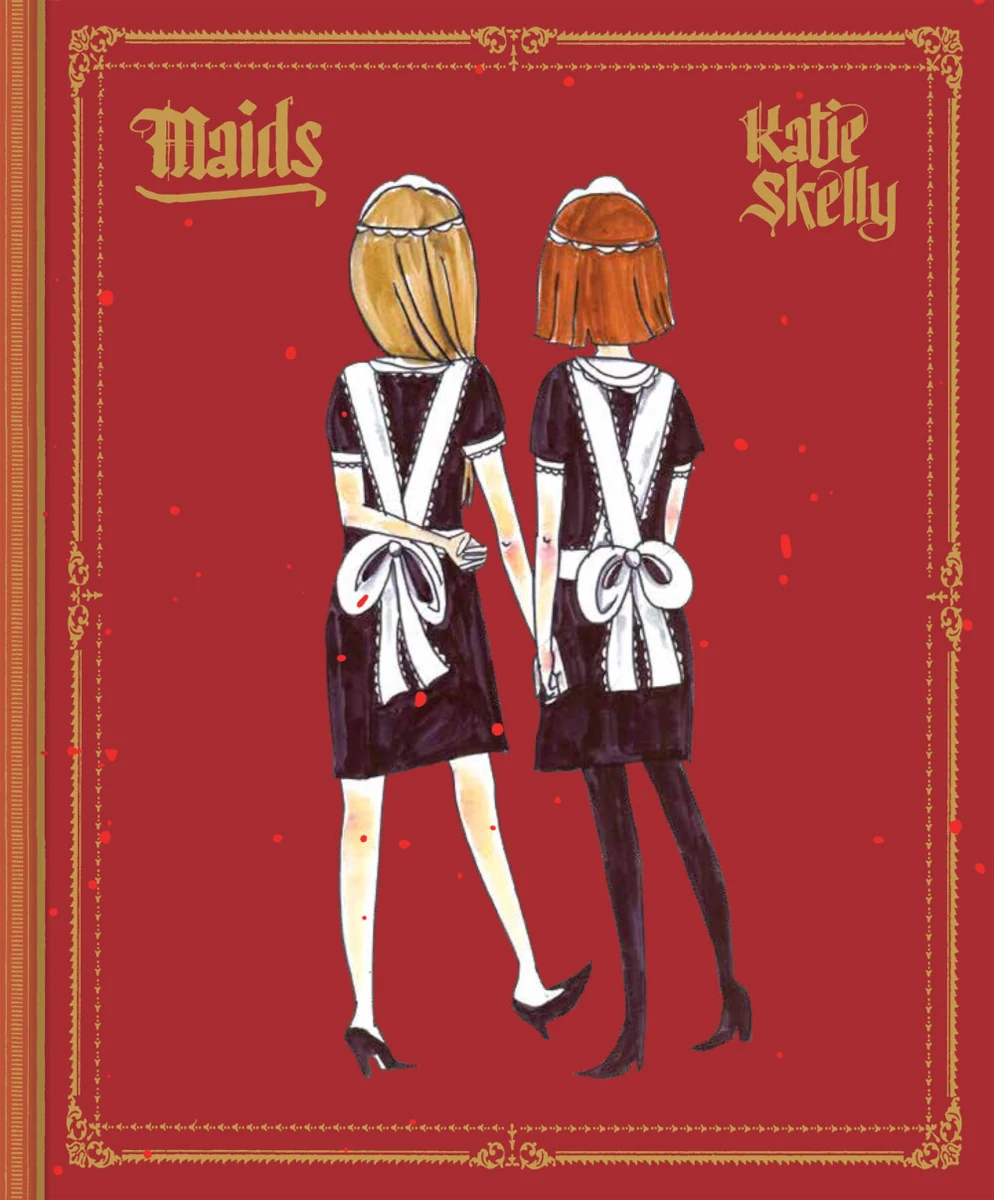
A Review of Maids by Katie Skelly
Words By Amber Sullivan
Published on October 13, 2020 by Fantagraphics
Maids, written and illustrated by Katie Skelly, is a historical fiction graphic novel set in 1930’s Le Mans, France. It follows the true events of Lea Papin and her older sister Christine Papin. The sisters, who are in their mid-twenties, serve as maids for the Lancelin family before brutally murdering Leonie and her daughter Genevieve Lancelin. From the first page, Skelly’s minimalist art signals a darkness lurking in the mundanity of the sisters’ lives as maids. The square blocked paneling creates the sense of repetition in the sister’s lives: wake up, cook breakfast, serve breakfast, wash and put away the dishes, clean the masters’ messes, serve high tea, prepare the masters’ dinner attire, tend the garden, prep dinner, clean again, serve dinner, go to bed. The only breaks in their chores are a single smoke break per day and regular chastisement from Madame and Mademoiselle Lancelin. Even though we only see this routine in full once, Skelly’s paneling choices create that repetition in her readers’ minds—every panel is exactly the same shape and size; every gutter is symmetrical and straight across or down the page. Skelly’s limited use of text also forces the reader into Lea and Christine’s world of quiet compliance. Pages pass without a word, but the eyes of the characters say everything we need to know.
Skelly emphasizes the importance of eyes and facial expressions before readers even open the book. The entire back cover is glossy and slightly textured except for Lea’s eyes, which are smooth and matte. It’s not a detail I noticed right away. It wasn’t until the book was sitting in the sun at just the right angle that I saw nothing but a pair of eyes staring at me through the harsh glare of the gloss. It’s unnerving, honestly. And it’s just the beginning of the power of expressions in Maids.
The girls only smile when they are together. This decision of Skelly’s highlights the societal forces against the Papin sisters; everyone else is the enemy, trying to keep them away from each other. The sisters often share glances that communicate more than text could. Their eye contact provides them a world of their own when the physical world beats them down. Theirs is a world of calm, of togetherness, of love. Except when it’s not.
Skelly’s use of color highlights the contrast of wealth and working class, of compliance and rage. The scenes when the sisters are together, not working, are backed in muted yellows and browns. This provides a sense of calm without influence from other forces. The sisters become the focal point, as there is little to no décor in these scenes. This is their world. In contrast, the wealth of the Lancelin family is shown in blues and greens. Genevieve’s blue eyes stand out in every panel she graces. Hers are the only eyes that are not dark, which sets her worlds apart from the Papin sisters, who are of a similar age. She sees a different world than the sisters do. Skelly populates the blue and green scenes with stair banisters, furniture, plants, clothes, and dishes that reveal the Lancelin’s wealth.
The red scenes, naturally, represent rage. The first glimpse of red is a page that reveals the darkness in Lea that began when she was a sister in a convent. Christine was forced to leave the convent to earn money for her family, and every flashback of Lea alone in the convent employs red panels. The truly rageful scenes are almost entirely red with black lines, painting the entire scene in blood red. The only details that possess other colors are often the source of the rage, so those targets stand out in bold. Here, Skelly depicts rage beautifully by showing how it can blind people to everything that isn’t the focus of their anger. Dispersed throughout the book, these scenes fuel the building tension throughout the entire story. Skelly’s use of color alone makes Maids a book that you’ll want to read at least twice, just to pick up on the subtle clues.
As a horror lover, I was expecting to see a bit more from the murder scenes, but that would have detracted from the slow burn of the Papin sisters’ snapping point. Skelly’s Maids is surprisingly quiet for a story about violent murders, but that’s what makes it so effective. Maids isn’t actually about the murders of the Lancelin women; it’s about rage and how it builds and what happens when it’s fueled.